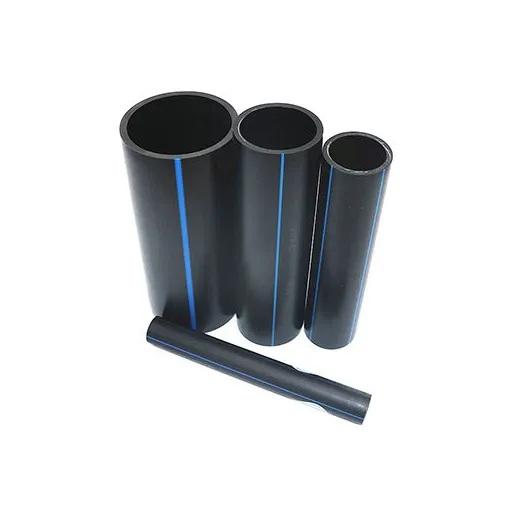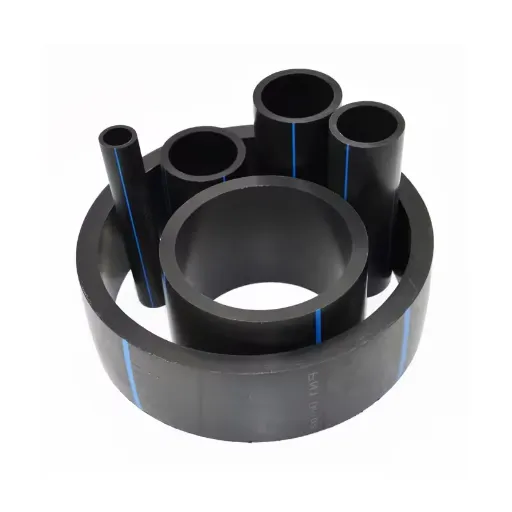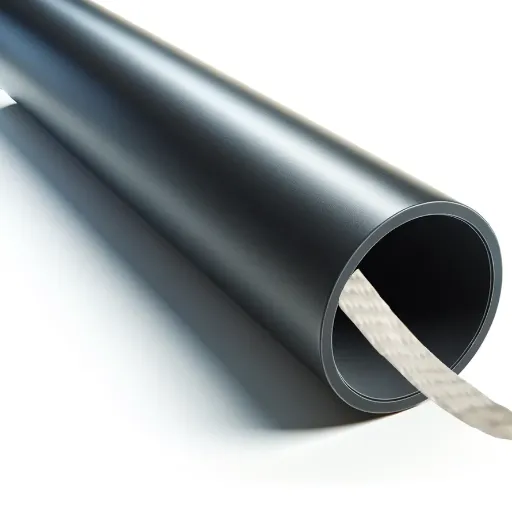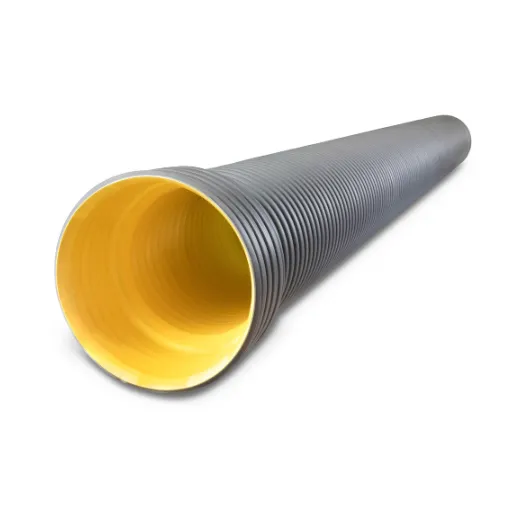Talking about modern infrastructure and efficient piping systems, DR11 HDPE (High-Density Polyethylene) pipe emerges as a reliable and versatile option. These pipes stand tall amid countless industries for their durability, flexibility, and performance. What exactly makes them so special, and what are the reasons for them increasingly being preferred by engineers and project managers? This article ventures into the world of DR11 HDPE pipes, their applications in different industries, major benefits that place them over their traditional counterparts, and the technical details that make them so effective. Whether preparing for any project or just intrigued about HDPE pipe technology, this guide has what you need to know.
Overview of DR11 HDPE Pipe
Description of HDPE and DR11 Standards
Generally speaking, for carrying mere water purposes, HDPE pipes are generally used. Considering HDPE being a tough and versatile plastic, it is used for fabricating a number of pipes because of its high strength against density, stress cracking, and durability. These pipes possess all lightweight characteristics and corrosion resistance and can be put on through extreme conditions, thereby proving their possibility to be used in countless applications, namely water distribution, gas transmission, and industrial projects.
Key Point: DR11 is a dimension ratio designation for HDPE pipes. It further elucidates DR as Dimension Ratio, which is the ratio of the outside diameter of an HDPE pipe to its wall thickness. A DR11 pipe usually is one with the thinnest wall relative to the outside diameter for strength, generating a modicum of flexibility in the pipe. This specification is generally employed in applications that demand somewhat tolerable pressure, municipal water systems, or irrigation networks.
The combination of the HDPE material with the DR11 standard produces an economical yet very tough pipe, secured to maintain a consistent flow. The DR11 HDPE pipes with proven long-term reliability and reduced maintenance generally come into preference for projects emphasizing durability and sustainability.
Specifications of PE4710 and IPS Dimensions
PE4710 is a high-performance polyethylene pipe material with superior strength, durability, and long-term reliability. It meets rigorous industry standards and is primarily utilized in high-pressure, environmentally resistant applications. Enhancing the resistance to slow crack growth and rapid crack propagation would significantly improve the material’s performance in difficult working conditions, making it an excellent option for high-end infrastructure systems.
IPS (Iron Pipe Size) dimensions form an established sizing system for polyethylene pipelines to ensure compatibility and uniformity during installations. The IPS measures pipes based on their smallest OD, allowing for smooth assembly with other fittings and components in water distribution, sewage, and industrial applications. Standard dimensions help ensure consistency and reliability across projects, simplifying pipe selection and installation.
Important: When combined, PE4710 and dimensions IPS offer a strong piping solution, which is considered to be suitable for applications with high pressure or medium pressure. Flexibility, amongst other materials properties, is afforded to the product along with toughness, and IPS sizing provides for the correct flow rates and adapts sufficiently to various environmental aspects. All these characteristics make PE4710 IPS pipes a foremost consideration for today’s infrastructure-based projects emphasizing sustainability, reliability, and long-term cost-saving.
Color Coding: Blue Stripe vs Green Stripe
Blue Stripe
The blue stripe is most often associated with potable water systems, which means that the standards cannot compromise the health and safety of providing clean and safe drinking water for residential, commercial, or public infrastructure use.
Green Stripe
Green stripes are often designated for non-potable water systems that could involve reclaimed water, irrigation water, or industrial waste waters. These pipes, although durable and efficient, are usually not approved for drinking water.
⚠️ Critical: It is important to understand that, if these pipes are utilized incorrectly, problems of compliance or system performance may open up. Always check the purpose of the pipes against any local regulations or standards for their ultimate use to ensure safety and efficacy.
Applications of DR11 HDPE Pipe
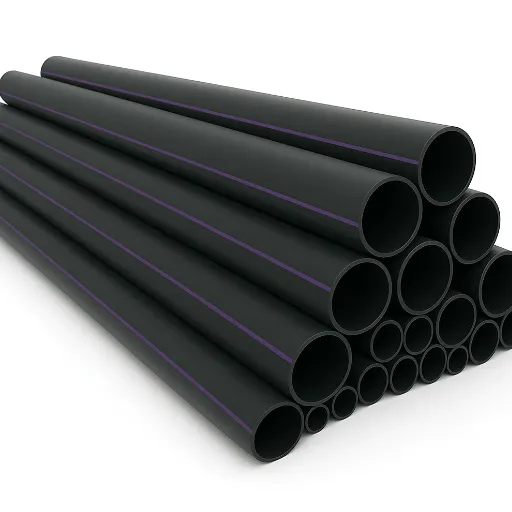
Usage in Water Distribution Systems
From low pressure to high pressure water distribution systems, the DR11 HDPE pipes really are considered to be the best because of their high degree of durability, flexibility, and resistance to corrosion. They are designed for high-pressure applications while maintaining their quality for long durations. Here are the top 5 common uses and advantages of DR11 HDPE pipes in water distribution systems:
-
1. Municipal Water Supply
The DR11 HDPE pipes are commonly used for municipal water systems to convey potable water. These pipes and fittings are joined by heat fusion, which is thus completely leak-proof, resulting in minimum water loss and the clean delivery of water to both households and industries.
-
2. Irrigation Networks
In larger agricultural irrigation systems, these pipes are used since they can withstand high pressures while being resistant to environmental and chemical stress, thereby great water conveyance to crops.
-
3. Fire Protection Systems
Due to their load-bearing characteristics and heat resistance properties, DR11 HDPE pipes have been used as underground fire protection pipelines to provide emergency water.
-
4. Industrial Water Transport
Processes involve DR11 HDPE pipe installation for conveying processed water or cooling water in situations where poor chemical resistance would cause pipes to quickly deteriorate.
-
5. Supply to Rural and Remote Areas
Being lightweight and easy to install, DR11 HDPE pipes fit well into water supply projects in rural or remote locations, where conventional piping materials may suffer logistical constraints.
Result: With the use of DR11 HDPE pipes, water distribution systems in such areas can be made more efficient with lower maintenance requirements and longer operational life.
Gas Distribution Applications
DR11 HDPE pipes are regarded as suitable components for gas distribution systems because of their inherent strength, flexibility, and resistance to corrosion. Below are 5 important applications of DR11 HDPE pipes in gas installations:
-
1. Urban Gas Distribution Networks
The usage of DR11 HDPE pipes ensures that gas is safely and efficiently transported throughout urban areas, also considering the impacts of varying temperatures and pressures. Being lightweight makes installation easy even in areas of dense local population.
-
2. Industrial Gas Transport
These pipes are used for greater pressures in gas transport systems in industrial environments. They comprise the best solution for industrial settings where gas is to be securely and constantly supplied.
-
3. Compressed Natural Gas Networks
DR11 HDPE pipes transfer CNG under high pressure and without any leakage, therefore ensuring the safe transfer of CNG from the refueling station to the point of distribution.
-
4. Pilot and Remote Distribution Systems
Wherever terrain poses an obstacle, the very flexibility and durability of these pipes come in handy: remote- and pilot-type gas grids with an uninterrupted supply of natural gas.
-
5. Underground Gas Pipelines
Being compatible for underground gas applications, DR11 HDPE pipes resist soil corrosion and chemical corrosion to ensure long life and greater safety in subsurface installations.
Conclusion: These applications demonstrate the flexibility and reliability of DR11 HDPE pipes in modem gas-distribution systems.
Industrial Systems and Their Requirements
The industrial system requires a material and infrastructure that meet rigorous operational standards, safety, viability, and sustainability. DR11 HDPE pipes have been utilized across workshops due to their strength, openness to limitation, and resistance to environmental changes. Below are five industrial system requirements and how HDPE pipes fit into those requirements:
-
1. Durability And Long Life
Industrial systems are set up under seasonal conditions with high pressures, variable temperature regimes, and exposure to harsh chemicals. DR11 HDPE pipes are sturdy and have a long service life and less needed for replacement, thereby conserving maintenance costs.
-
2. Corrosion Resistance
Many challenges are faced by industrial systems due to chemical exposure. The DR11 pipes made of HDPE resist corrosion well and are hence used in chemical plants and in wastewater systems as in any other industries where there are corrosive agents.
-
3. Pressure Handling
From the standpoint of high pressure, usually under many other industrial systems such as manufacturing purposes of water treatment, it needs at high-pressure conditions. It is HDPE that gets the DR11 pipe to resist high pressures without the loss of structural integrity.
-
4. Flexibility and Ease of Installation
Industrial set-ups, owing to limited space and intricate layouts, sometimes pose very difficult challenges in installations. Flexibility of these DR11-HDPE pipes allows clean installation in restricted spaces with less need for joints and connectors.
-
5. Environmentally Sustainable
Prioritizing sustainability on the modern industrial stage demands very little if any carbon imprint. DR11 HDPE pipes are recyclable yet help energy conservation activities by diminishing leakage and ameliorating system performance.
Summary: Hence, these requirements illustrate the DR11 HDPE pipes being the best partner in different industrial applications to provide a trustworthy and efficient solution to the unique demands of modern systems.
Benefits of DR11 HDPE Pipe
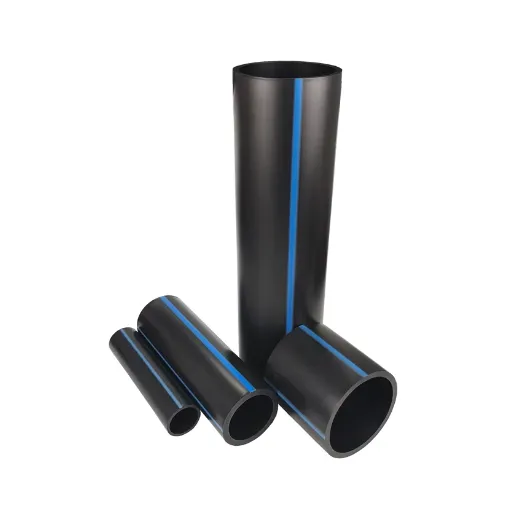
Durability and Longevity
DR11 HDPE pipes are made to withstand hostile environmental conditions during usage for their long-term working. Following are some properties that remind one of durability and time:
Corrosion Resistance
Unlike traditional materials like steel or iron, DR11 HDPE pipes resist corrosion due to chemicals, salts, and moisture, thus ensuring a long service life even in harsh conditions.
Impact Strength
The pipes resist impacts caused during transportation, installation, and operational stresses without causing any failure of the pipe.
Thermal Resistance
DR11 HDPE pipes maintain stability and performance in structural terms at both extremes of temperature-the very cold and the very hot.
Crack Resistance
Excellent resistance to crack propagation lessens the chances of failure of pipes with time even under pressure fluctuation.
Low Maintenance
Thanks to its robust construction, DR11 HDPE pipes incur minimal wear and tear, consequently minimizing the costs of maintenance and interruptions in service throughout their life period.
Bottom Line: This makes DR11 HDPE pipes sustainable and economically viable for modern infrastructure projects.
Corrosion Resistance Compared to Other Materials
Corrosion resistance is the only parameter setting apart DR11 HDPE pipes from other materials. Conventional piping materials such as metal and concrete suffer corrosion by different corrosive agents-due to being exposed to harsh environmental conditions. Whereas DR11 HDPE pipes offer limitless durability against these processes-they are the very embodiment of reliability regarding long-term performance. The following is a comparison of corrosion resistance between DR11 HDPE pipes and five common materials:
-
⚙️ Steel
Steel pipe is an efficient rusting and corrosion agent when in contact with water, air, or chemicals, and thus needs coating or treatment against corrosion regularly; on the other hand, DR11 HDPE pipes never undergo rust or corrosion when being similarly treated.
-
🔶 Copper
While copper possesses better corrosion resistance than steel, it still suffers degradation due to oxidation and exposure to either acidic or basic solutions. DR11 HDPE pipes, on the other hand, are unaffected by such chemical reactions, thereby retaining their structural integrity.
-
🔷 PVC
PVC pipes resist many forms of corrosion well but may gradually degrade under prolonged UV radiation. On the other hand, DR11 HDPE pipes are UV-stable and hence more resilient under sunlight for long hours.
-
🏗️ Concrete
Concrete pipes can be exposed to chemical corrosion, especially in highly acidic or alkaline atmospheres, as in the case of wastewater systems. DR11 HDPE pipes are inert to such chemical interactions, guaranteeing that they last and work well.
-
🔩 Cast Iron
Cast iron pipes, after all, can corrode internally and externally and hence the need for internal linings or coatings to offer protection. DR11 HDPE pipes do not need any of such treatments and coatings since they resist corrosion from both an internal and an external perspective.
Key Takeaway: Such an all-around corrosion-resistant feature makes DR11 HDPE pipes an excellent choice across industries, bringing down maintenance expenses and elongating the system’s lifespan.
Pressure Ratings: Understanding 200 PSI Capabilities
200 PSI Performance Features
Durability in High-Pressure Systems
The DR11 HPDE pipes retain their integrity under prolonged pressures and rarely burst or fail in the event of critical design operation.
Temperature Tolerance
Tested to work under a broad range of temperature and to maintain their structural strength at 200 PSI levels of pressure.
Longevity and Lifecycle
Its highest-pressure rating brings in greater service life, even though pressure fluctuation may be continuous or cyclical in the system.
Leak-Proof
Fusion-welded joints used in DR11 HDPE assemblies ensure leak-proof operation even under high-pressure conditions, thus increasing system efficiency.
Industry Standards
These pipes for pressure ratings meet or exceed industry standards, and the pipes are subjected to extensive tests that validate their performance at 200 PSI under every application condition.
Installation Best Practices for DR11 HDPE Pipe
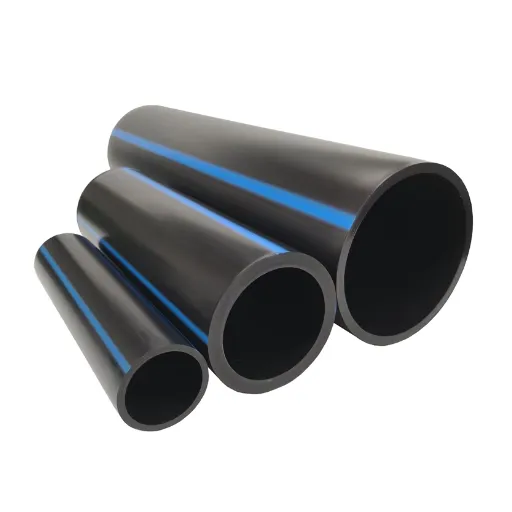
Preparation and Site Assessment
Improper preparation and site inspection are the stepping stones to an unsuccessful DR11 HDPE pipe installation. The very process entails the selection of the project site, reviewing. Uneven terrain, underground obstructions, or environmental circumstances could hamper installation. Carrying out the survey involves analyzing the soil composition since this could affect decisions about whether the ground is stable enough for the pipe system. Using proper locating equipment is necessary to identify any utilities or existing pipelines nearby that might be accidentally damaged during installation.
It is equally essential that all the material, tools, and equipment must be available and according to specifications for DR11 HDPE Pipe installation. Inspection of all pipes and fittings upon delivery shall ascertain any damages that may have been caused during transportation. Providing clean storage for the pipes from which they can be easily retrieved and protected from extended UV exposure or chemical contamination maintains the pipes’ integrity until installation has commenced. Proper staging of materials would then allow a good workflow and avoid delays on the job.
💡 Pro Tip: Also, environmental considerations should be taken into account if the installation work is carried out in fragile ecosystems or under unfavorable weather conditions. In doing so, erosion control measures such as sediment traps and silt fences can be put into place in order to protect water quality in adjoint streams or wetlands due to soil displacement. The incorporation of such preparation and site assessment practices allows contractors to reduce risk, improve efficiency, and uphold safety and environmental standards, thereby contributing to a robust and long-lasting piping solution.
Handling and Storage Recommendations
The proper handling and storage of the piping materials will ensure the viability of the structural integrity, damageless condition, and ease of work once the pipes are on-site. Pipes or equipment such as slings or padded hooks should always be handled with care so as not to cause scratches, dents, or other structural damage. In unloading, pipes must never be dropped or dragged because doing so can jeopardize their quality and ability to be worked on.
Storage Guidelines:
- The pipes should be placed in a dry and shaded area away from direct sunlight to avoid the damaging effect of UV rays, mainly in the case of materials prone to such damage through prolonged sun exposure, such as certain plastics.
- The pipes should be stacked evenly on a flat, stable surface with chocks to prevent any movement.
- Avoid stacking pipes ridiculously high as the ones at the very bottom may have to bear deformations from those currently resting on them.
- End caps are gratefully, if not outrageously, useful to keep debris, dirt, and moisture from getting inside.
Furthermore, checking for chemical compatibility should be a key consideration. Pipes must never be kept near fuels, solvents, or other chemicals, as reactions could practically destroy the material. Keep in mind that all handling and storage must be, and in fact should be, according to the manufacturer’s instructions, safety standards, and quality standards. These recommendations allow contractors to guarantee the durability and reliability of their piping systems for the duration of their project.
Comparative Analysis of DR11 HDPE Pipe with Other Materials
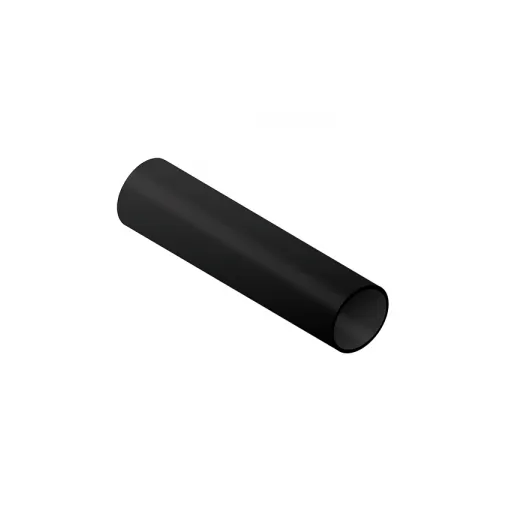
Comparison with PVC Pipe
Therefore, HDPE is more flexible, UV-resistant, and able to resist pressure surges better, while PVC offers tensile strength, a lower price, and better static pressure ratings.
| Aspect | HDPE | PVC | Remarks |
|---|---|---|---|
| Flexibility | Superior | Limited | HDPE bends easily |
| UV Tolerance | Excellent | Poor | HDPE resists UV |
| Resilience | High | Moderate | HDPE lasts longer |
| Pressure | Dynamic | Static | HDPE for surges |
| Strength | Moderate | Superior | PVC is stronger |
| Expense | Higher | Lower | PVC is cheaper |
| Connection | Heat Weld | Glue/Gasket | HDPE seamless |
| Temperature | Extreme Ready | Limited Range | HDPE extreme-ready |
| Longevity | 100+ Years | 100+ Years | Both long-lasting |
| Usage | Versatile | Specific | HDPE adapts more |
Ductile Iron vs HDPE: Pros and Cons
Corrosion Resistance
Ductile Iron: It simply needs to be coated or lined externally to prevent corrosion, mainly when used in acid or saline soils. Unlike HDPE pipes, it may last less in corrosive conditions if the best treatment is not provided.
HDPE: This polymer material resists corrosion by nature, so it does not need any lining or coating when laying it underground or underwater.
Flexibility and Stress Resistance
Ductile Iron: It offers strength and rigidity but may crack when faced with extreme ground movement or pressure exerted on it by shifting soils.
HDPE: It is quite flexible and resistant to dynamic stresses, especially suited to areas with frequent seismic activity or significant soil movement.
Installation and Connectivity
Ductile Iron: Generally joined using gasket-sealed joints, which are easy to assemble but which may present some difficulty in ensuring a 100% leakage-free system, especially under high pressure.
HDPE: Thermal fusion technique is used, which creates a seamless joint with very little chance of leakage and full joint strength.
Weight and Transportation
Ductile Iron: Very heavy, which increases transportation costs and requires more specialized machinery for handling and installation.
HDPE: It is a light pipe to transport and install, thus cheaper and easier logistically, especially in hard-to-envision areas.
Cost Factors
Ductile Iron: Higher price of the material is compensated by higher tensile strength and pressure-bearing ability.
HDPE: While a little less expensive upfront, its long-term cost efficiency is higher due to low maintenance requirements and better durability in harsh conditions.
Steel Pipe Considerations in Modern Applications
Steel pipes have remained as one of the most conscious choices due to their strength and durability, while adaptation to various industries. The following must be borne in mind when considering steel pipes for modern applications:
-
💪 Strength and Load-Bearing Power
Steel pipes are subjected to tension forces, sometimes loaded with heavy loads, and are used practically everywhere where structural and industrial applications are required, for example, construction frameworks, transportation of heavy materials, etc.
-
🛡️ Corrosion Resistance with Protective Coatings
Being exposed to moisture, chemicals, or outdoor environment, steel experiences corrosion. Nonetheless, with development in coating technology, advanced coatings, such as galvanization, epoxy lining, or polyethylene sheathing, can provide protection to steel in these corrosive bodies.
-
🔧 Multiple Applications
Because of their rigidity and thermal resistance, steel pipes are applicable in very diverse areas such as oil and gas transport, plumbing, HVAC, and even somewhat nowadays in automotive design.
-
🌡️ Temperature and Pressure Tolerance
Steel pipes function well at extreme temperature and pressure conditions and are essential in industries such as power plants, refineries, and chemical processing plants where other materials may fail.
-
♻️ Recycle-Ability and Sustainability
Steel is one of the most recycled materials on this Earth; more than 80 percent of used steels being recycled. Hence, steel pipes are an environmentally-friendly option that does not compromise performance.
Final Note: Each of these considerations plays an important role in deciding when and where steel pipe is an appropriate choice, maintaining the balance of strength, longevity, and environmental practicality in modern infrastructure and industrial projects.
References
- Durability and Reliability of Large Diameter HDPE Pipe
This document discusses the selection of DR11 HDPE with PE4710 resin and its applications. - Design Standard – Underground Piping Installations
Provides design standards for HDPE pipes, including specific DR11 specifications. - Domestic Water Piping Standards
Outlines the use of DR11 HDPE pipes for specific pressure applications. - HDPE Fusion and Electrofusion Training
Covers standards and qualifications for joining DR11 HDPE pipes. - High-Density Polyethylene Water Distribution Piping
Discusses pressure and design considerations for DR11 HDPE pipes.
Frequently Asked Questions (FAQ)
Q: What is DR11 HDPE pipe?
A: A DR11 HDPE pipe is that kind of high-density polyethylene pipe famous for its durability and flexibility. “DR11” stands for Dimension Ratio, an engineering term that says that the pipe has a thicker wall relative to its diameter and therefore is capable of being adapted for various uses including water distribution and sewage system.
Q: What are the applications of black HDPE pipes?
A: Black HDPE pipes, including DR11-type HDPE pipes, find their use in water distribution, agricultural irrigation, and sewage systems. Because black pipes resist corrosion and chemicals, they make a great vessel for transporting potable water and other fluids.
Q: What are the various shipping options available for HDPE pipes?
A: HDPE pipe shipping options, including DR11 HDPE pipes, differ with the suppliers.
Q: How do I figure out how much DR11 HDPE pipe I need for my project?
A: To figure out how much DR11 HDPE pipe you will require, analyze your piping system layout by measuring various distances between hookup points. In the installation, consider any bends or dips so that you do not fall short of material.
Q: What does stripe now available for HDPE pipes mean?
A: “Stripe now available” denotes HDPE pipes that come adorned with a color stripe for specific use or pressure rating. This can aid a user in quickly identifying different types of pipes at job sites.
Q: Why should I choose DR11 HDPE pipes instead of the other types?
A: DR11 HDPE pipes are preferred for their high strength-to-weight ratio, resistance to chemical substances, and their flexible nature. They serve as excellent candidates for a variety of applications particularly in environments where tough and dependable piping solutions are needed.
Ready to Start Your Project?
DR11 HDPE pipes offer unmatched durability, flexibility, and cost-effectiveness for your infrastructure needs. Whether for water distribution, gas systems, or industrial applications, these pipes deliver reliable performance for decades to come.



